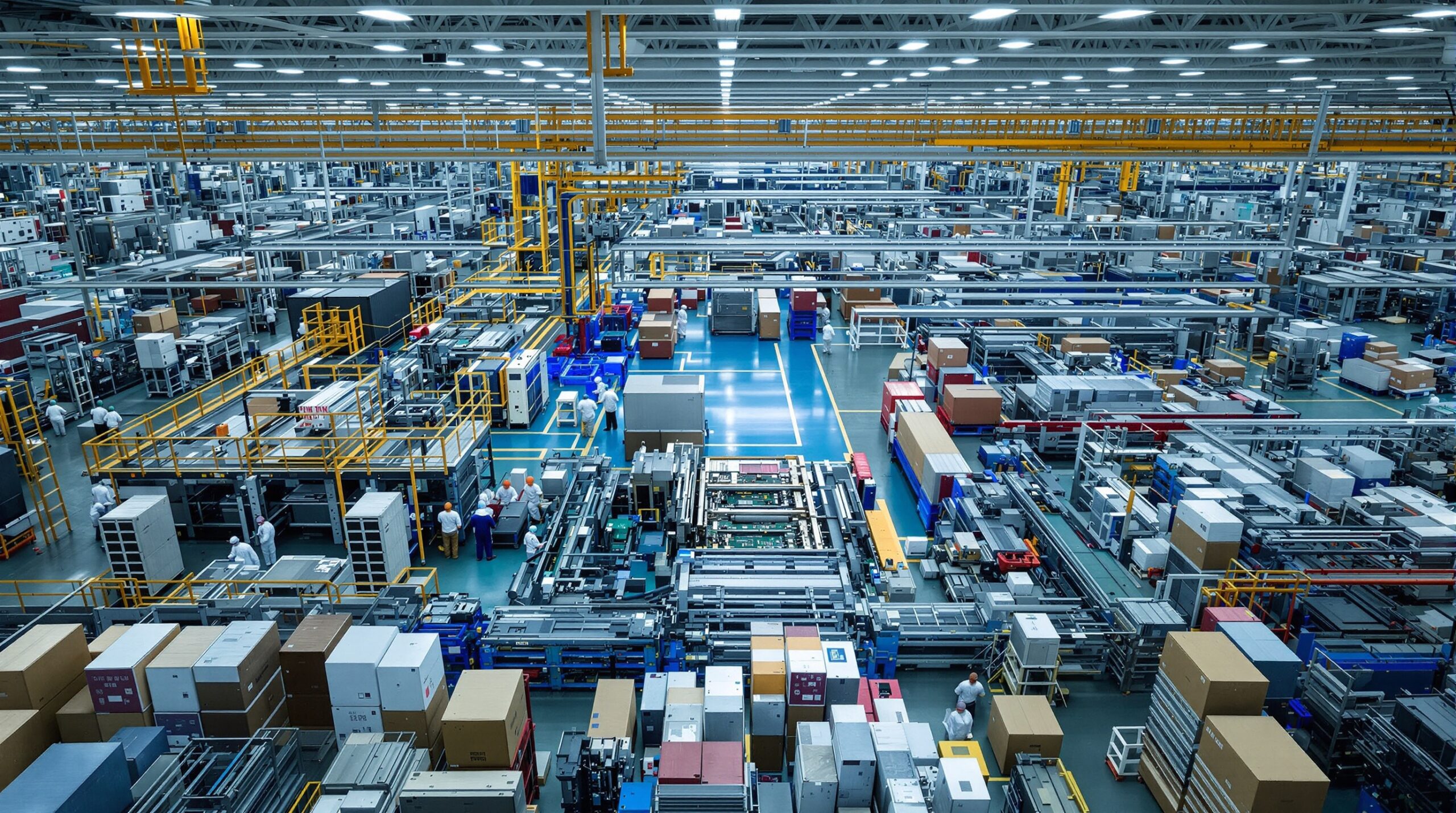AI Chip Demand Reshapes Global Semiconductor Supply Chains
Artificial intelligence (AI) is now one of the main drivers of transformation in the semiconductor industry. Demand for AI chips is changing global supply chains, manufacturing priorities, and investment trends. As companies race to supply next-generation chips for machine learning, traditional supply chain models are being disrupted.
Explosive Growth in AI Chip Demand
AI workloads require specialised chips that deliver high computational power while maintaining energy efficiency. Data centers, autonomous vehicles, robotics, and consumer electronics need these high-performance processors to fuel AI applications. As a result, chipmakers are diverting resources towards designing and producing AI-specific semiconductors.
Market analysis reveals a surge in orders for graphic processing units (GPUs), tensor processing units (TPUs), and other AI-optimized hardware. Tech giants like Nvidia and AMD have reported historic sales records, driven primarily by AI chip sales. Investors now prioritise companies that excel in the development and manufacturing of AI-capable chips.
This rapid increase in demand puts additional pressure on existing supply chains, which still face disruptions and shortages from past global events. It also challenges industry players to innovate and adapt rapidly.
Transformation of Manufacturing Priorities
Foundries and chip manufacturers must now cater to complex designs and advanced fabrication processes. Producing AI chips requires finer process nodes, often measured at seven nanometers or below. Such precision manufacturing demands enormous capital investment and research capabilities.
Major foundries such as Taiwan Semiconductor Manufacturing Company (TSMC) and Samsung have expanded their advanced node production lines. They prioritize high-margin AI chips over legacy products like microcontrollers or basic memory chips. This reallocation of resources can reduce the availability of chips for other sectors.
As foundries compete for AI-focused business, long-term supply agreements become more common. Large customers secure production slots for years ahead, locking in capacity and component supply. Smaller buyers struggle in this environment, often facing delays or higher costs.
Shifting Geographical Hubs and Strategic Alliances
Rising AI chip demand also impacts the global distribution of semiconductor manufacturing. Countries and corporations each want resilient, secure supplies of high-tech chips. Consequently, governments increase support for domestic semiconductor industries to avoid over-reliance on foreign production.
The United States recently launched the CHIPS Act, providing subsidies to encourage domestic semiconductor manufacturing. Major chipmakers are building new fabrication facilities in North America, Europe, and parts of Asia outside of China and Taiwan. Diversification of manufacturing locations improves supply chain security.
Moreover, strategic alliances are forming between chip designers, manufacturers, and tech firms. Companies collaborate on joint research ventures or share advanced fabrication technologies. These partnerships help spread the high costs required to develop new AI-ready manufacturing processes.
Supply Chain Vulnerabilities and Responses
AI chip production relies on complex, global supply chains for both materials and advanced equipment. Shortages of rare earth elements or lithography machines create bottlenecks, impacting production schedules. Recent geopolitical tensions and trade disputes have also introduced new uncertainties.
To counter these risks, companies are stockpiling raw materials and diversifying suppliers. Supply chain transparency and digital tracking processes are gaining traction as effective safeguards. Some manufacturers adopt “just-in-case” inventory models, holding surplus resources to guard against disruptions.
Governments are also tightening export controls on sensitive chip technology, especially between the U.S. and China. These efforts reshape vendor relationships and may slow innovation due to restricted market access. At the same time, they motivate companies to localize more of their component sourcing and production.
The Impact on Chipmaking Equipment and Materials Suppliers
AI chip production requires not only advanced foundries but also specialised production equipment and materials. Vendors producing extreme ultraviolet (EUV) lithography systems, high-purity silicon wafers, and rare gases have experienced record demand. Equipment suppliers such as ASML and Lam Research are expanding manufacturing capacity and R&D efforts.
Material constraints can become critical choke points within the AI chip ecosystem. For example, shortages of highly refined photoresists or gases like neon and argon can halt production lines. Suppliers are investing in new facilities and diversifying geographically to avoid interruptions.
These investments do not always keep pace with the fast-rising demand for AI chips. As a result, lead times for both equipment and materials are lengthening in some regions. This, in turn, creates further planning and investment challenges for chip manufacturers.
The Rise of Alternative Supply Models
As the AI chip market expands, new supply chain strategies have emerged. Some companies pursue vertical integration, bringing design, manufacturing, and assembly under a single organizational roof. This approach aims to improve quality control and shorten product development cycles.
Others turn to chiplet architectures, where smaller, modular processing units are manufactured and assembled by different suppliers. This model increases flexibility and can reduce cost and manufacturing bottlenecks.
Cloud service providers and large tech firms sometimes design proprietary AI chips for exclusive use in their own data centers. This reduces competition for off-the-shelf chips and further fragments the global supply landscape.
Looking Forward: Opportunities and Challenges
AI’s influence on the semiconductor industry will continue to reshape global supply chains for years to come. The need for increased capacity will drive further investment in state-of-the-art fabrication, materials, and equipment. Industry players must balance innovation against geopolitical risks and unpredictable market trends.
At the same time, demand for faster, more efficient AI chips will pressure companies to invest in research, advanced materials, and workforce training. Traditional chip users could face lingering shortages as foundries focus production on high-value AI customers.
More countries will likely compete for semiconductor sovereignty, with governments offering incentives to attract investment and high-tech talent. New partnerships and business models—such as foundry-sharing or industry consortia—will emerge to distribute risk and speed up development cycles.
Conclusion
Rising demand for AI chips is dramatically altering global semiconductor supply chains. Companies and governments now view a secure, resilient chip supply as a strategic priority. Ongoing innovation and collaboration will be essential to address new challenges and unlock opportunities in the AI-powered era.

